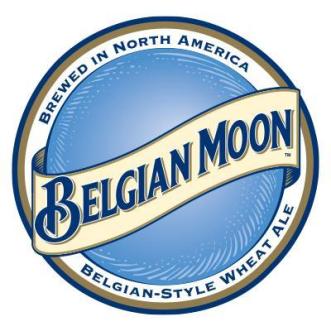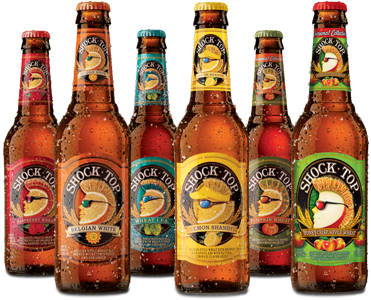
Quite some time ago, I realized I was getting close to having 5000 followers on twitter.
Accordingly, I tweeted that, should I reach that milestone within the next week, I would purchase and drink the variety mix pack from Shock Top and record the experience. People seemed enthused by the idea of a beer snob drinking Shock Top.
I reached 5000 followers the next day.
For those who don’t know, Shock Top is a beer that is marketed as a “Belgian Stye Wheat Ale” but is in fact liquid garbage. First produced in 2006, the beer is made by Anheuser-Busch InBev SA/NV, a marketing company that controls roughly a third of the world’s beer; however, this beer is rather dubiously marketed as a craft beer. It actually says on the can that it is from “Shock Top Brewing Co.” and, in bars, it is typically positioned by Anheuser-Busch InBev SA/NV to compete with craft beer among consumers who don’t know any better. I once enjoyed a considerable amount of traffic on this very blog back in September of 2014 when I managed to get my hands on a marketing brief prepared by Canadian Anheuser-Busch InBev SA/NV subsidary Labatt that suggested they were planning an expensive, intentionally misleading ad campaign to promote Shock Top in Canada as craft beer after market research revealed how many of the beer’s drinkers were misinformed about the beer’s origins.
The original Shock Top is something like a Belgian Witbier–in much the same way that the Olive Garden in the Magic Valley Mall in Idaho is something like Tuscan dining. Originally released as Spring Heat Spiced Wheat in 2006, the brand was a rather transparent attempt by ABI to release a shitty witbier that would compete with Blue Moon, another shitty witbier, this one created by Miller-Coors with the obvious purpose to trick dumb people into thinking they were drinking craft beer and to compete with the growing small brewer segment. Here in Canada, Shock Top, the beer marketed as a product of a non-existent craft brewery in St. Louis, is actually brewed in Labatt’s facilities in London, Creston, Edmonton, Montreal, Halifax, and St Johns. Blue Moon is marketed by Molson-Coors in Canada as “Belgian Moon” because a Toronto craft brewery hilariously bought the rights to the name Blue Moon in Canada. In a pinch, you might also drink Rickard’s White if shitty witbier is your thing as it seems to be essentially the same beer, but with perhaps a different ratio of butt beer.
But I digress. You came here to read about me drinking this shit. Continue reading “Drinking Shocktop”




